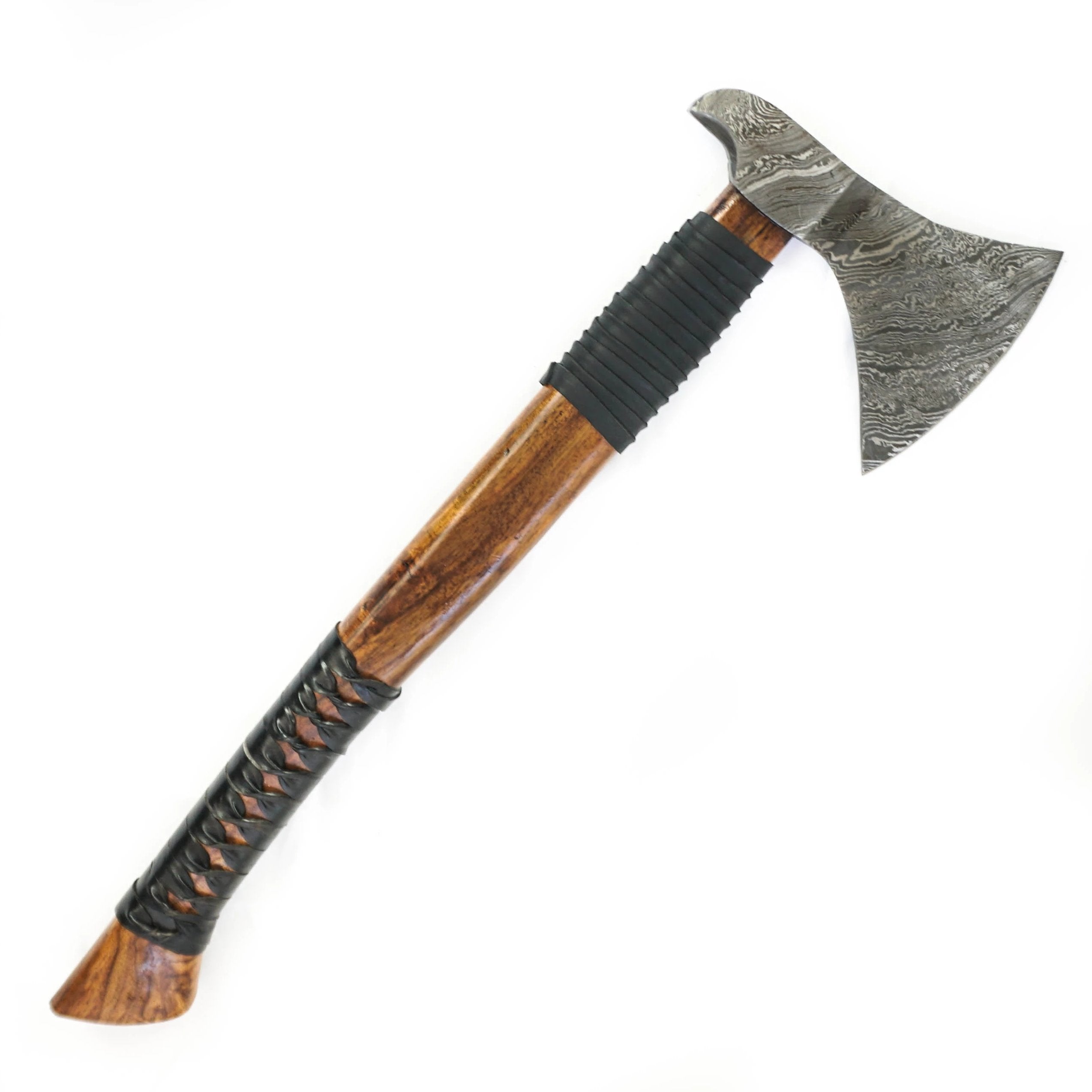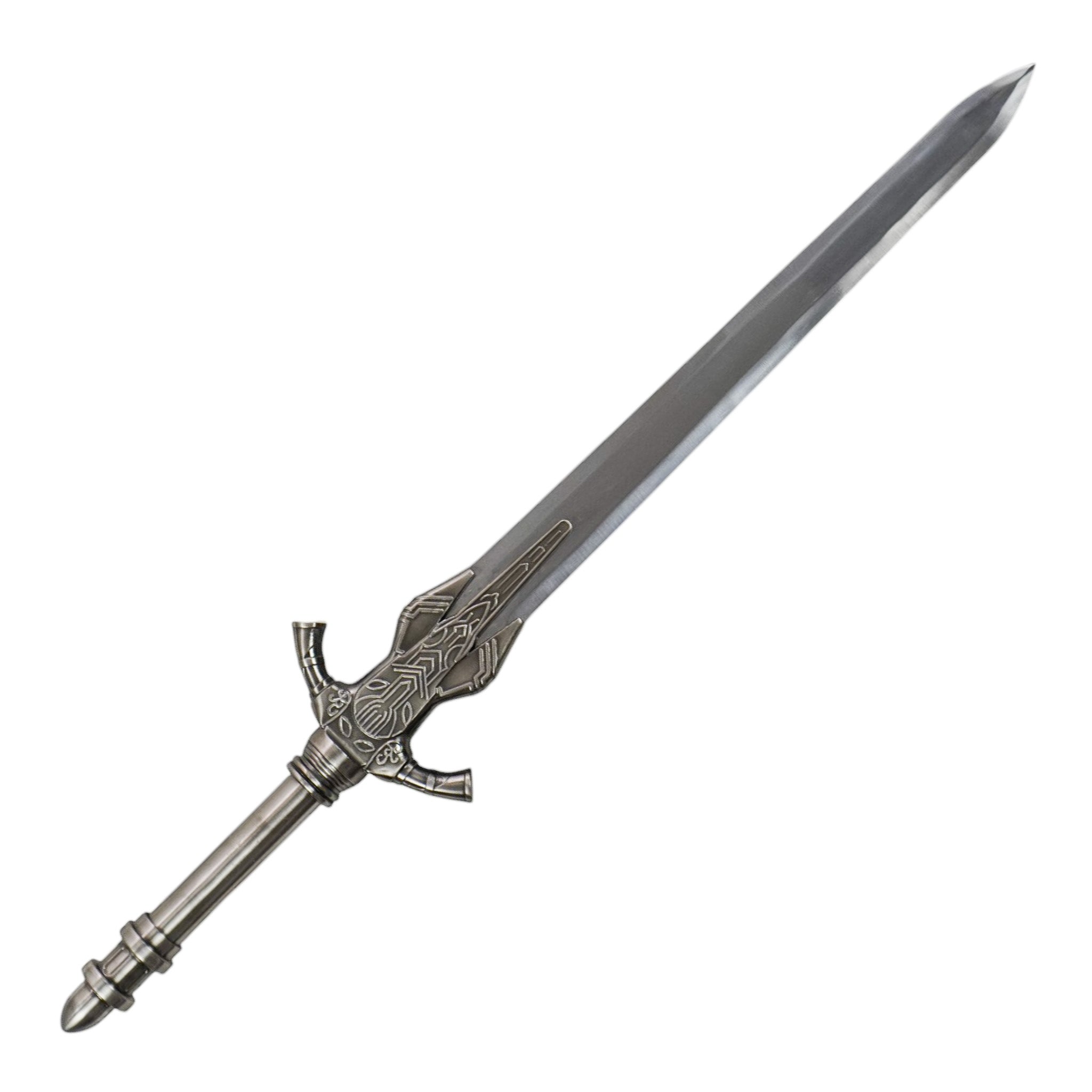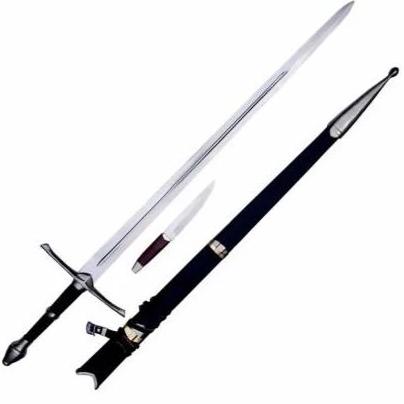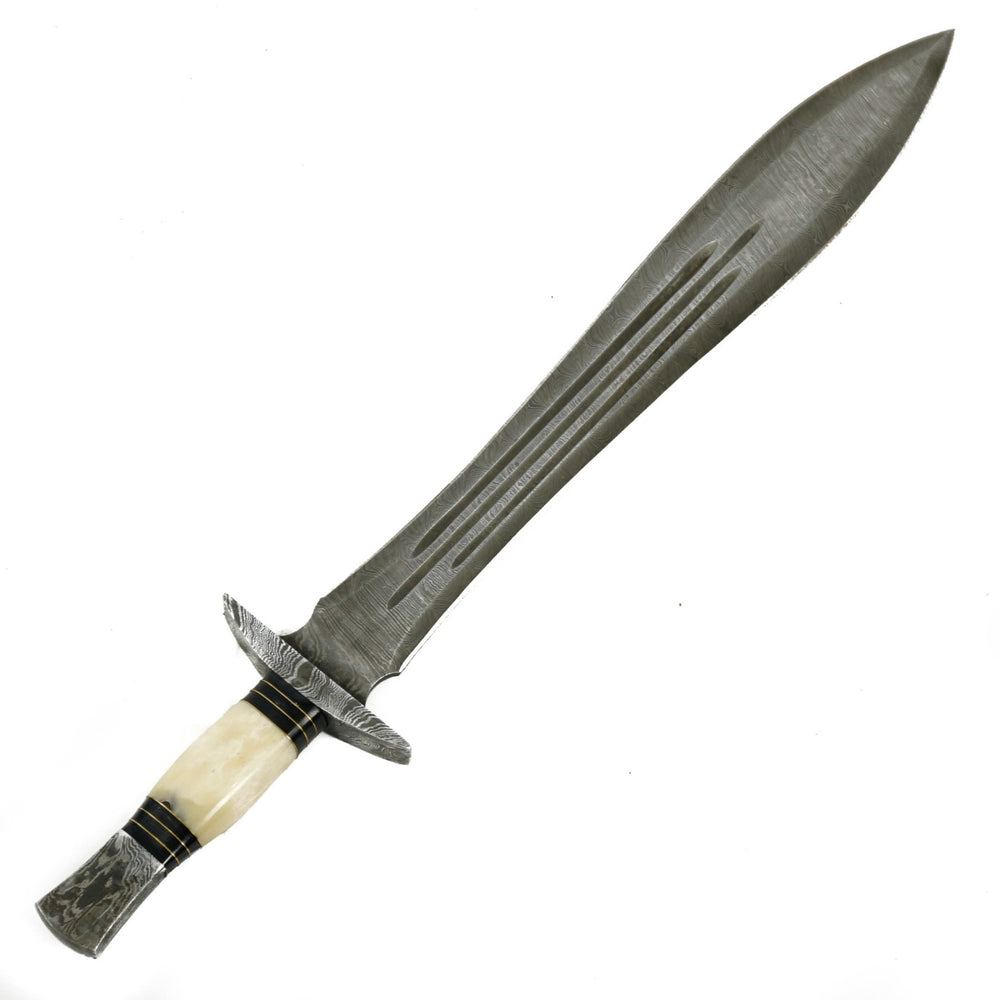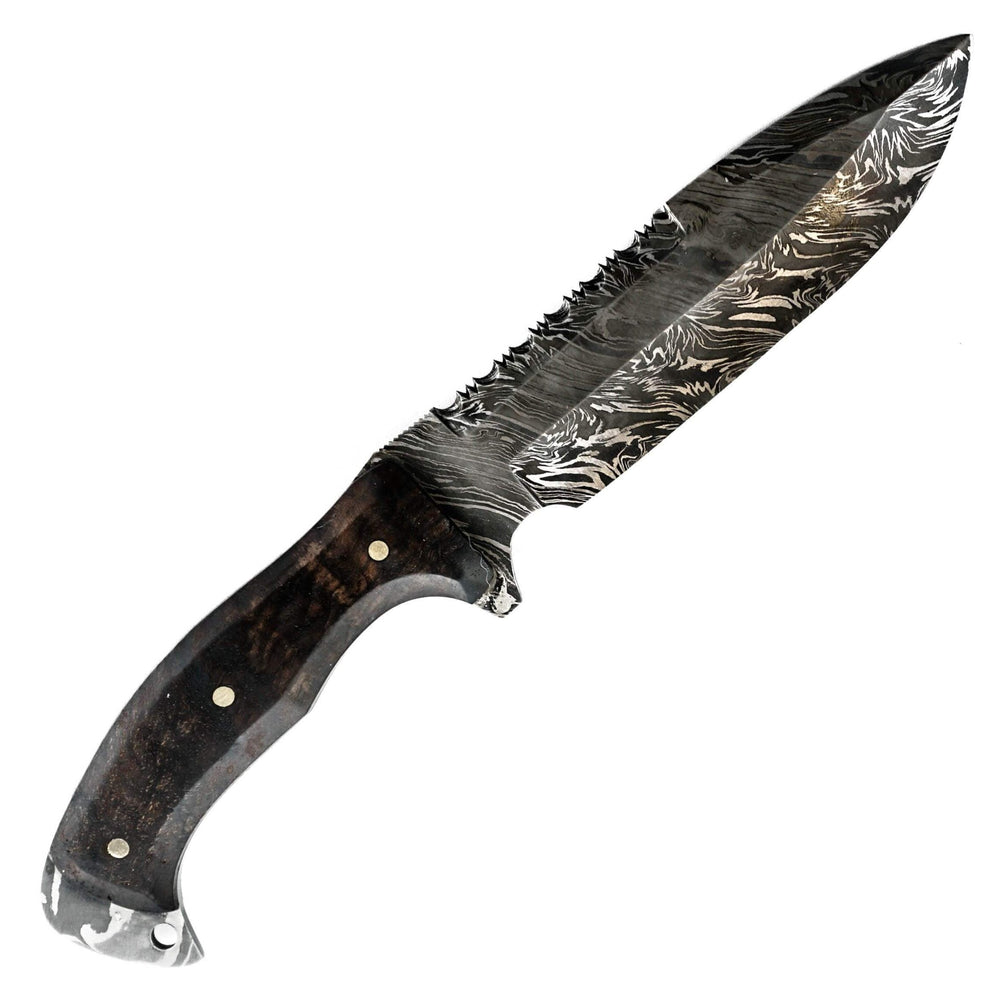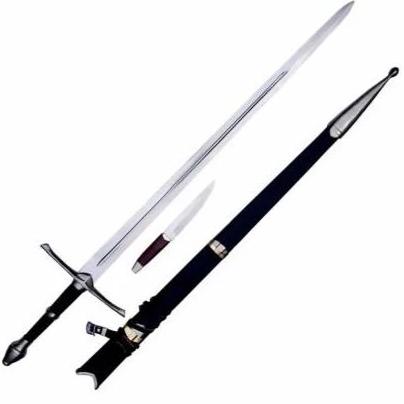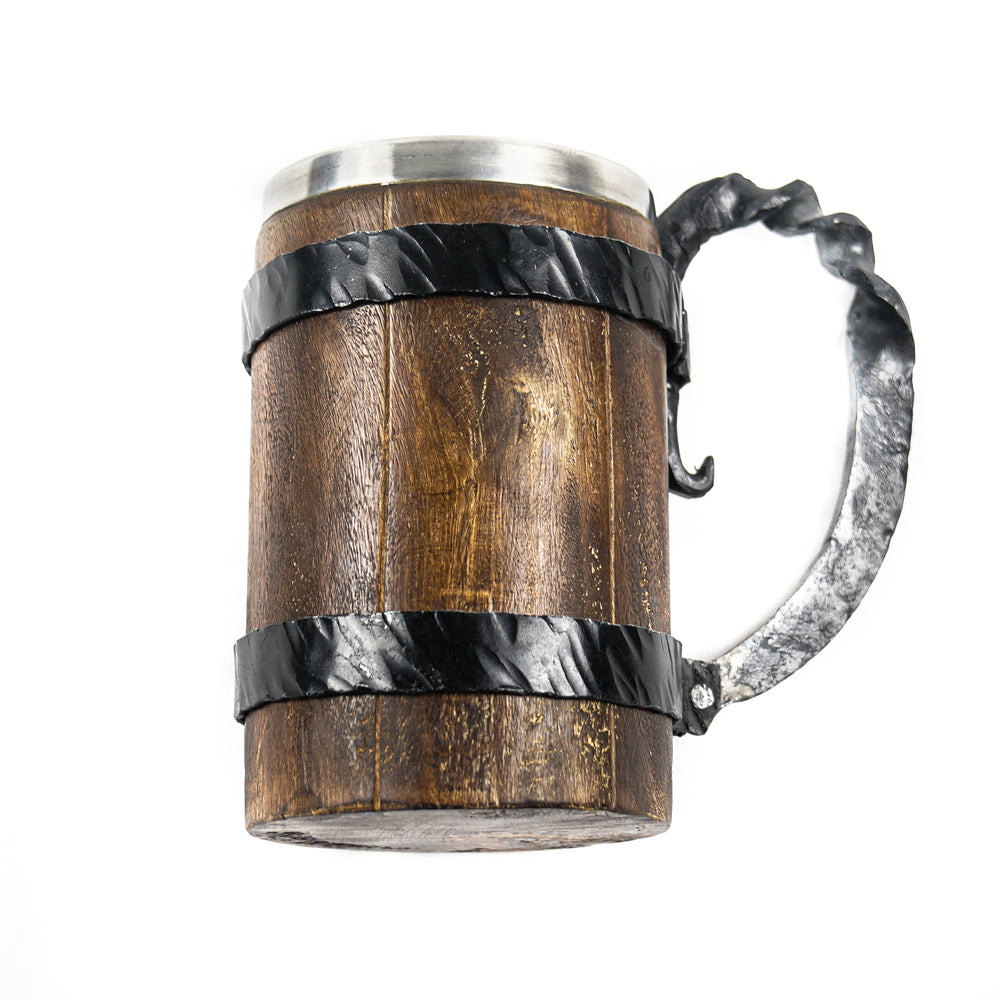Unveiling the Best Preserved Viking Swords
Welcome to a captivating excursion through time where we disentangle the magnificence of the best preserved Viking swords.
These blades were created by ace weapon smiths from Viking societies and have endured everyday hardships. Still, they have remained almost faultless, consistently saving their mind-boggling subtleties and surprising plans.
The Viking blade was a weapon utilized by fearless heroes in the combat zone as a presentation of status, power, and renown.
Go along with Battling Blades as we dig deeply into the universe of Viking weaponry and investigate the secret fortunes that have stayed concealed for a long time!
History Of Vikings
The Viking Age endured from the late eighth century to the mid-eleventh 100 years. It was described via nautical investigation and attacks across broad domains incorporating Europe, North Africa, and Western Asia.
The Vikings were striking for their maritime, shipbuilding, and military ability, abandoning a tradition of dread and social trade. Despite fluctuating perspectives towards the Vikings, their impact can be felt in numerous parts of present-day culture. These include areas like language, writing, regulation, and craftsmanship.

Viking Society
Viking society was a perplexing trap of familial, political, and strict ties that decided one's status locally. The Vikings put stock in a pantheon of divine beings like Odin and Thor and held elaborate ceremonies to respect them.
Despite the romanticized perspective of Vikings as pirates, they were ranchers, brokers, and experts in actuality. They had a remarkably stylish sense and appreciation for magnificence.
Viking Weaponry
Viking weaponry was a significant piece of their military and striking technique. They utilized many weapons, including swords, tomahawks, lances, and retires, which were made considering high craftsmanship and usefulness.
The oldest Viking swords found were remarkable for their quality, including sharp, twofold-edged edges and multifaceted grips.
In addition, the Vikings utilized safeguards, mail, cowhide covering, and caps to safeguard themselves in a fight. The most famous Viking weapons were probably embellished with unpredictable plans and images that mirrored the wearer's social personality.
Viking Blade Craftsmanship
Materials And Strategies
Viking blades were ordinarily produced using high-carbon steel, valued for its solidarity, adaptability, and sharpness. The steel was frequently obtained from iron-rich locales like Scandinavia and handled through "extinguishing" to accomplish the ideal properties.
The best preserved Viking swords found were created using various procedures to make the perfect edge, including producing, welding, and crushing. The craftsmen would then connect the cutting edge to a complicatedly embellished grip built of bone, wood, or metals.

Plans And Examples
The Viking swords found had producers known for their imaginative style, making edges that were practical and stylish.
Numerous Viking blades were enhanced with mind-boggling designs. For example, the well-known "Viking design welding" procedure delivered twirling plans in the steel.
The Viking swords found also frequently highlighted creatures or legendary themes like mythical beasts or snakes. They were pervaded with emblematic implications and had great social importance.
Engravings And Imagery
Viking blades were frequently recorded with runes, a process for composing utilized by the Vikings that had both common sense and enchanted applications.
The engravings could incorporate the sword proprietor’s name, the name of the actual blade, or even mystical spells or mantras.
These engravings added to the blade's worth and importance and mirrored the well-established association between Viking society and the powerful.
Best Preserved Viking Swords
The best preserved Viking swords found demonstrate the expertise and masterfulness of Viking sword producers.
These swords commonly have sharp edges that reach from 80 to 90 centimeters in length. Moreover, they come with twofold more full plans that are considered more noteworthy adaptability and lighter weight.
The grips are frequently engraved, including creature, mathematical, or human figures, and produced using materials like ivory, silver, or copper amalgam.
The blades are amazingly all-around safeguarded, with sharp edges and itemized plans that have gone on for a long time.

The Viking swords discovered were ordered into four sorts per their particular times of purpose. These sorts are the "Jellinge," "Hedeby," "Viking," and "late Viking."
The Jellinge sword was the most established type, tracing back to the ninth 100 years. In contrast, the late Viking blade was utilized in the eleventh century. Every sword type had its unique plan and capability, contingent upon the necessities of the Viking fighters at that point.
For example, the Jellinge sword had an unmistakable grip, while the Viking sword had a straight cutting edge with a more full. The Hedeby sword, then again, had a profound handle and a short sharp edge.
Besides, the real Viking Swords found to this date have fascinated historians and archaeologists alike. Some of the notable examples of well-preserved Viking swords that have captured the attention of historians, archaeologists, and enthusiasts include:
- The Ulfberht Swords: These swords are renowned for their high-quality craftsmanship and unique inscriptions. They often bear the name "Ulfberht" or similar variations, indicating their superior quality and advanced metallurgical techniques. They are considered some of the most remarkable Viking swords due to their innovative forging methods.
- The River Witham Sword: Discovered in the River Witham in England, this Viking sword is well-preserved due to being submerged in water. The blade, hilt, and pommel are remarkably intact, providing valuable insights into Viking weaponry and craftsmanship.
- The Langeid Sword: The Langeid sword is a Viking sword found in Norway with intricate decorations on the hilt and pommel. It showcases the artistic and metallurgical skills of Viking swordsmiths.
- The Ballateare Sword: Unearthed in the Isle of Man, the Ballateare sword features a well-preserved blade with an inlaid copper alloy inscription. It provides insights into the social and cultural context of Viking-era Manx society.
- The Vreta Kloster Sword: Discovered in Sweden, the Vreta Kloster sword is a Viking-era sword with an ornate hilt and pommel. It's a testament to the Viking's craftsmanship and their appreciation for aesthetic beauty in weaponry.
- The Bjärsjölagårds Sword: Found in Sweden, this sword has an exceptionally well-preserved hilt with bronze decorations. It showcases the level of detail and craftsmanship that Viking swordsmiths put into their creations.
Check out the best Viking Swords collection at Battling Blades and get mesmerized by these historical relics!

Verifiable Importance
The best preserved Viking swords offer a brief look into the past, making us familiar with Viking society, innovation, and craftsmanship. They frequently come from internment destinations or archeological settings that uncover essential data about the Vikings.
Additionally, the blades offer experiences into the existence of Viking champions and the jobs that weapons played in their societal position and character.
Legendary Ties
The best preserved Viking swords have fanciful ties, interfacing them straightforwardly with the narratives and legends of Viking divine beings. A few blades are named after fanciful figures, while others bear engravings or plans referencing notable stories from Viking folklore.
These associations with the extraordinary domain exhibit the profound otherworldly and social underlying foundations of Viking sword-making. Moreover, they feature the persevering tradition of Viking narrating and folklore.
How Viking Blades Were Utilized In Fight
Viking swords, otherwise called "skeggøx" or "unshaven tomahawks," were used for hacking and cutting in fights. The swords had a twofold sharp edge, estimated around 30 creeps long, and were made of excellent iron and steel.
Besides, there were various kinds of Viking blades, each with its capabilities. For instance, the longsword was great for pushing assaults, while the small sword was valuable for close battle.
Some Viking swords discovered were additionally intended for tossing. The Viking champions were talented in utilizing different strategies like forceful charging and abrupt retreats to surprise their adversaries.
The edges were a fundamental part of the Viking heroes' munitions stockpile, as they represented their solidarity, grit, and ability to fight.
Vikings Fight Strategies
Vikings were known for their clever strategies in fight. One of their strategies was the "safeguard wall," where champions interlocked their safeguards to make an invulnerable obstruction. At the point when the foe drew near, the Viking heroes would release their swords and assault.
Another strategy was the "trap," where the Vikings would take cover behind regular covers, like trees, and perform surprise attacks. Likewise, The Vikings would utilize their spryness and speed for their potential benefit, at times charging headlessly into a fight and withdrawing and refocusing.
Significance Of Blade In Viking Fights
The Viking blade was a pivotal weapon in Viking fighting, representing their solidarity and boldness on the front line. Swords were additionally important belongings, passed down starting with one age and then onto the next. They were enhanced with many-sided plans and etchings that addressed the Vikings' convictions and culture.
Vikings frequently name their weapons, saturating them with a feeling of character and unique interaction. Blades were weapons in Viking society and had social and symbolic importance.

Wonderful Subtleties Of The Best Preserved Viking Swords
Complexities and Accuracy
The best preserved Viking swords discovered are flawless instances of the masterfulness and accuracy of Viking metalworkers. The blades were planned such that they guaranteed that every part had a particular capability. The handle was intended for an agreeable hold, while the edge was dangerously sharp.
Moreover, the blades were impeccably adjusted and weighed around 2-3 pounds, making them simple to use in the fight. The perplexing plans on the sword's handle and edge were gently scratched, uncovering the ability and craftsmanship of the metalworkers.
Emblematic Portrayals
Viking swords found were enhanced with different images addressing their lifestyle and convictions. For example, the blade of a Viking ruler could have a winged serpent theme, proposing the lord's power and authority.
Different blades had unpredictable knotwork and designs motivated by the Viking's association with nature. The images on the Viking blades were enhanced and pervaded with importance and importance in Viking society.
Protection Procedures
The best preserved Viking swords found were made of top-notch iron and steel and were treated with different conservation strategies. These assisted them with enduring the attacks of time.
For example, blades were frequently covered with a slim layer of defensive oil to forestall rust and consumption. Likewise, a few swords were enclosed by a fabric or a delicate calfskin sheath to safeguard the sharp edge from scratches.

Where To Track Down Viking Swords Today
Galleries And Shows
Galleries are among the most mind-blowing spots to track down bona fide Viking blades today. Numerous historical centers globally house many Viking artifacts and are known for their broad assortments of old relics.
These galleries look into the life of these furious champions and frequently incorporate presentations of Viking protection, caps, safeguards, and blades.
For instance, the Viking Historical Center in Oslo, Norway, has a noteworthy assortment of Viking blades. Some of those are shown close by different relics from the period.
Other eminent galleries displaying real Viking swords include The English Historical Center for London, The Public Exhibition Hall of Denmark, and The Public Gallery of Sweden.
Confidential Assortments And Deals
As of late, there has been an expansion in the number of private authorities and vendors selling Viking blades. Many swords, like the ones at Battling Blades, are sold at barters and online stages.
Confidential assortments frequently incorporate pieces that are uncommon or in flawless condition. They can give an exceptional open door to gatherers or lovers to secure a genuine Viking blade.
Even so, purchasers should be careful, as numerous imitations are available. Investigating the vendor or dealer, as well as the blade's realness, is urgent before making a purchase.
Legitimacy And Examinations
Legitimacy assumes an essential part in trading Viking swords. A certified Viking sword is remarkable from an alternate period. A specific degree of skill is expected to affirm that it's anything but a phony.
Proficient examinations should be possible to confirm a Viking sword, especially by specialists knowledgeable in Viking weaponry. Another method for deciding genuineness is analyzing the subtleties and markings in the blade.
For instance, Viking weapons were frequently finished with mind-boggling examples. The specialists could determine the period and beginning of the sword in light of the plan.
Regarding credibility and examinations, it's vital to work with a confided-in vendor or master to guarantee the Viking blade is veritable.

The Bottom Line
All in all, the best preserved Viking swords offer an extraordinary look into the rich history of Viking society. With their multifaceted plans and immaculate conservation, these weapons demonstrate the expertise and craftsmanship of the old Viking smiths.
Besides, we, at Battling Blades, analyze these swords with their dangerously sharp edges and lethal focuses. Even so, we can't resist the urge to envision the courage and savagery of the Viking heroes who employed them in battles.
From the celebrated two-gave swords to the quick and destructive short blades, every weapon has its own story to tell. Through them, we can learn about the strategies, techniques, and battling styles of the old Vikings that assisted them with exploring the dangerous universe of victory and war.
At last, it is critical to recall that these inestimable curios are simple articles, yet a fundamental piece of our human legacy. Considering protecting these blades for future generations assists us with valuing the resourcefulness and imagination of our predecessors.
In such a manner, disclosing the best preserved Viking swords isn't simply an occasion. It is rather a demonstration of perseverance through the tradition of the Viking society and its commitment to the world's experiences.

